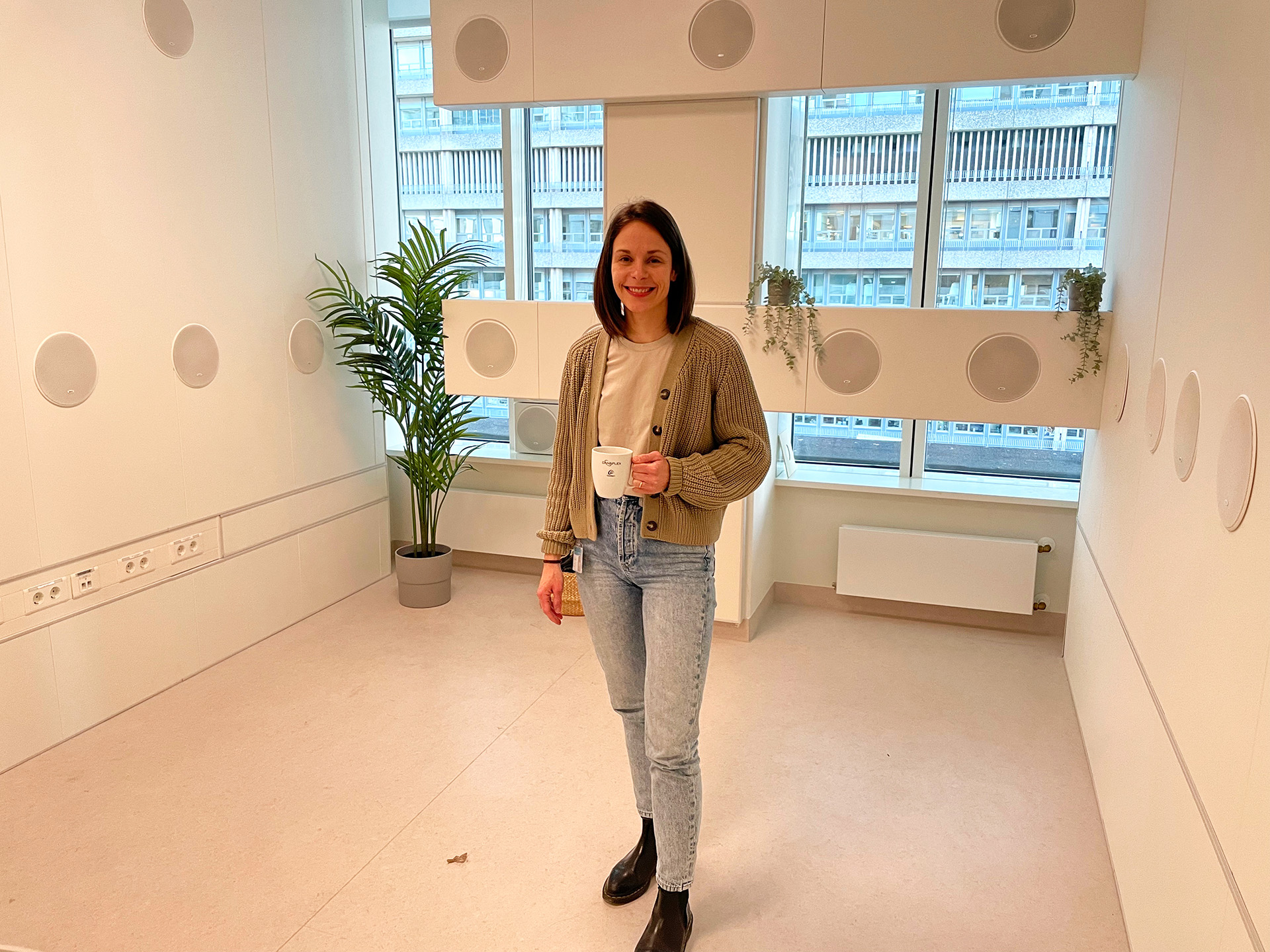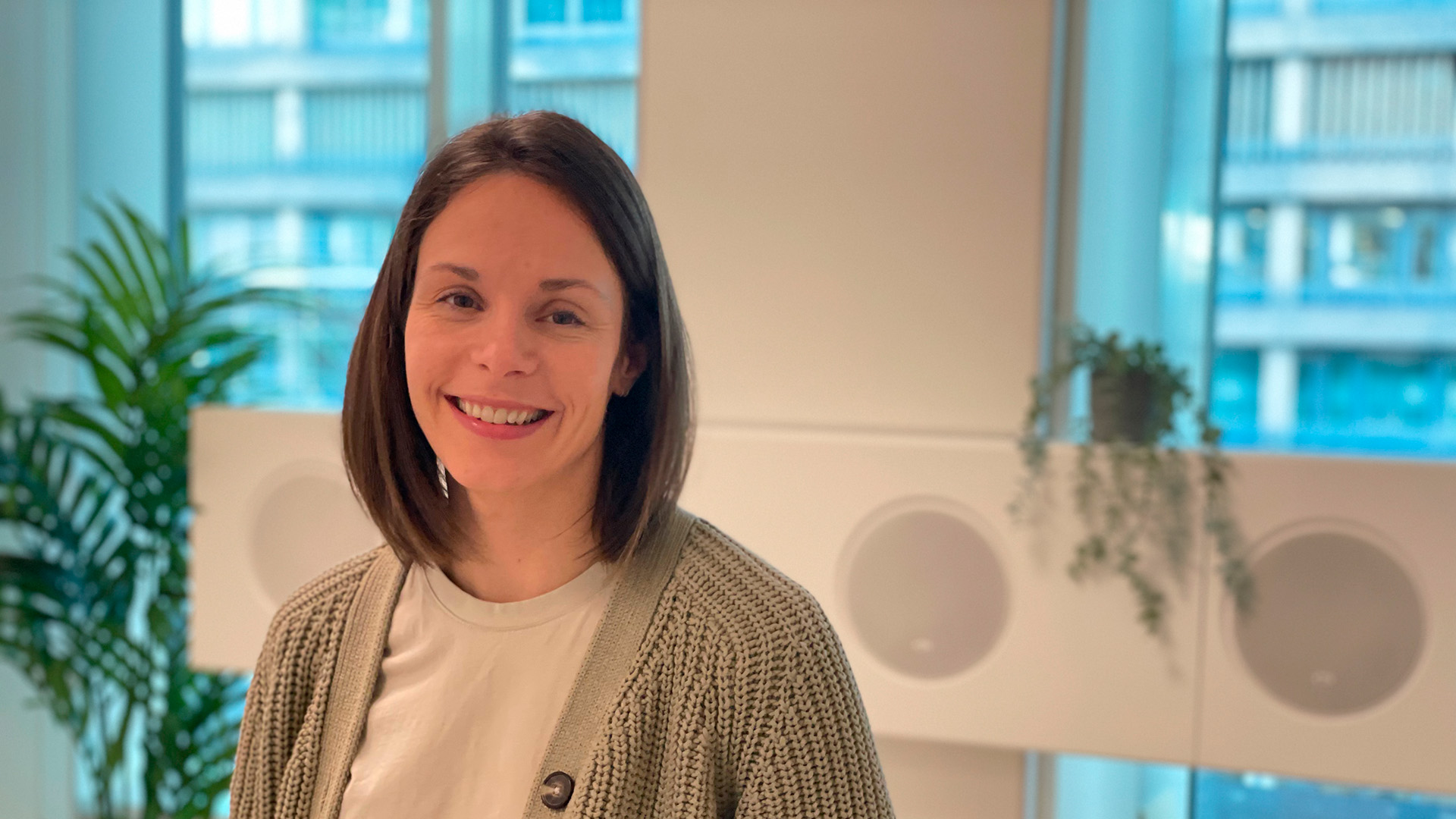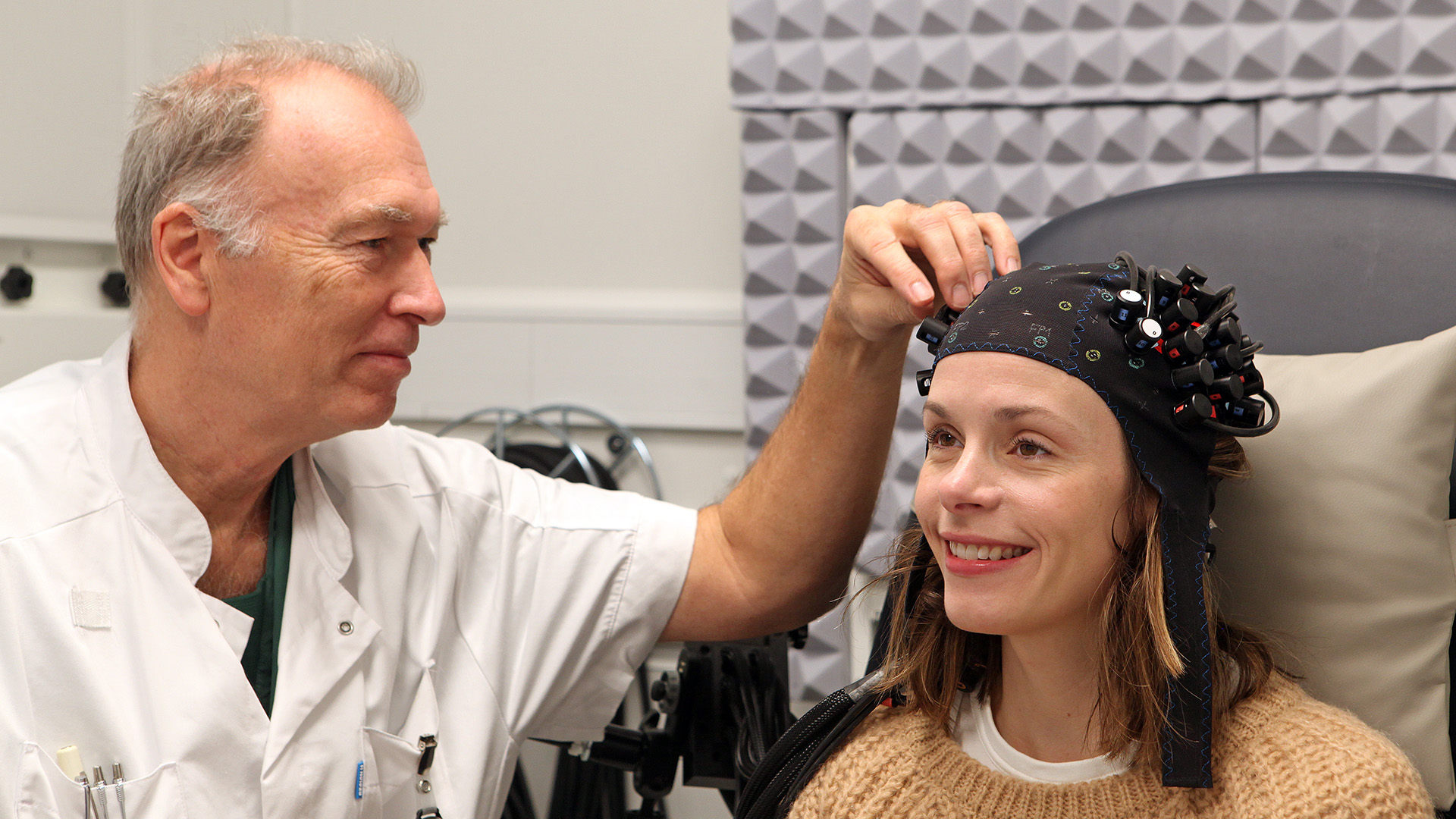Facts
Innovation
Audiology researcher with a good ear
Researcher Abigail Anne Kressner has a hearing impairment and uses her unique insight to improve the hearing experience of other hearing impaired people by means of innovative technology.


Cholesteatoma ate the middle ear
One spring day in 1995, nine-year-old Abigail dribbles the ball across the asphalted driveway and shoots it into the basketball hoop. She is an athletic girl with golden brown hair and a firm gaze. Abigail is playing against her three sisters outside the family’s house in the Chicago suburb of Lombard. When she is not playing basketball, she is doing her homework with her twin sister Josie, with whom she shares a room. There is more floor space in the room when the pull-out bed has been folded away.
The school is within walking distance, and, one day, the pupils in the third grade are given a hearing test in the school library under a municipal screening programme. Abigail unexpectedly flunks the test and is examined further by an ear specialist, who ends up referring her to an ear surgeon. It turns out that Abigail has a cholesteatoma—or ‘bone eater’ in layman’s terms—which is eating into the bone in her right middle ear, impairing her hearing. Until now, no one in Abigail's family—herself included—has noticed any problems with her hearing.
In October, Abigail is admitted to Hinsdale Hospital to have the cholesteatoma removed. In her case, it is important to treat the cholesteatoma as soon as possible to avoid more damage to her ear.
It is a major procedure that takes a couple of hours, so Abigail is put under anaesthesia. The ear surgeon will remove the whole cholesteatoma, as it will otherwise grow back in a short time. The ear surgeon repairs the damaged hearing bones in Abigail’s right middle ear by inserting a prosthesis. Abigail feels groggy, and her parents are relieved when she wakes up from the anaesthesia. After two nights in hospital, Abigail is discharged with a bandage around her head and strict instructions to keep her head still. It will be six weeks before Abigail can play basketball again in the family’s driveway.
The most common type of hearing loss occurs in the inner ear, where the tiny hair cells break, or in the nervous system of the ear, as the result of ageing or hearing damage. This can make it difficult to distinguish speech from noise and to hear high-frequency sounds such as bird song, and you feel that other people are mumbling. The type of hearing loss that Abigail has is rarer and is called conductive hearing loss, which occurs in the outer or middle ear. No one knows how Abigail’s cholesteatoma occurred, but the cause is often inflammation of the middle ear.
Hearing aid or not?
The following year, in 1996, Abigail undergoes surgery for the second time because the prosthesis does not fit properly inside her ear. After the procedure, Abigail’s hearing in her operated ear appears to have improved. She still plays basketball wearing a pair of red-and-white Air Jordans and a T-shirt with a print of WNBA star Sheryl Swoopes. The WNBA (Women’s National Basketball Association) is the dominant professional women’s basketball league in the United States. On top of that, she has started playing softball and volleyball. In middle school, Abigail and Josie start in a science class, where they learn math, physics, and chemistry at a faster pace and with greater depth than in an ordinary class.
Just before starting high school, Abigail ends up on the operating table for the third time. Her ear prosthesis no longer functions optimally and needs to be removed. Not many people in Abigail’s circle know that she is struggling with her hearing. Abigail’s hair behind her ear is shaved off in connection with the operation. When she gathers her hair in a ponytail as usual, the bare skin is exposed, much to Abigail’s annoyance.
For the next several years, Abigail attends regular check-ups with the ear specialist, where it is discussed every year whether she might benefit from using a hearing aid. One factor in the decision is whether the family can afford it. Both Abigail’s parents work as unskilled workers. Her father is a truck driver and drives an 18-wheeler, while her mother manages the lunch scheme at Abigail’s and Josie’s school.

Pioneering country
24 years later, 37-year-old Abigail has developed her own strategies for hearing the world around her better. Abigail works as an assistant professor at DTU Health Tech and at Rigshospitalet’s Copenhagen Hearing and Balance Centre, both places with focus on improving and developing new technologies and methods for treatment of hearing loss.
Denmark’s position as a pioneering country in the field of audiology is what arouses Abigail's interest while she is studying engineering at Georgia Institute of Technology. After completing her PhD, she moves to Denmark together with her Danish boyfriend, whom she has met in the United States.
Abigail is in her seventh year as a researcher, has a Danish husband, and two small children. Family and work take up most of her time, but she makes sure to keep fit by cycling to work on her racing bike and running around the lakes in Copenhagen whenever she can.
Moderate hearing loss
Two weeks before the inauguration of the Spatial Hearing Lab, Abigail participates in an international conference called ‘Speech in Noise’ in Split, Croatia. Here she is to present her research results. She will give a presentation on a project in which patients with cochlear implants—an implant that can restore hearing—had their spatial hearing measured. She will also present the Danish Sentence Test (DAST) project, which aims to create speech material usable in all areas of speech and hearing science, such as testing and evaluation of hearing and hearing aids. DAST is a collaboration between Rigshospitalet’s Copenhagen Hearing and Balance Centre, DTU, and three Danish hearing aid companies.
The sentence test measures speech intelligibility. When a hearing impaired person hears a sentence, how much of it can he or she then repeat? Speech intelligibility is important to measure in determination of hearing loss severity. With DAST, Abigail and her collaboration partners are trying to expand the sentence test with more sentences containing some of the most commonly used words in Danish. This makes it possible to measure more accurately speech intelligibility in Danish.
Both presentations go well, but as a participant sitting in the middle of the auditorium, Abigail has great difficulty hearing what is being said from the podium. Abigail moves to the front row, where she can see and lip-read the keynote speaker. In this way, she can now cope with the poor acoustics of the auditorium.
Abigail does the same when she is in a noisy bar and people she is talking with hold their hand in front of their mouth. She will then typically ask the person in question to move his or her hand so that she can lip-read above the noise. In situations where she has to have a conversation with one or more people while walking down the street, she makes sure to position herself so that she can listen with her good ear.
Abigail is a perfect example of just how invisible a disability hearing loss can be. Although she has had poor hearing in her right ear since the age of nine, few people know about Abigail’s moderate hearing loss. Both then and today. And because she did not start wearing a hearing aid when she was little, today she only uses her one good ear to hear with.
When asked directly whether she would benefit from using a hearing aid, Abigail replies: “I should, in fact, book an appointment with the otologist soon.”
CV
Abigail Anne Kressner
2019: Assistant Professor at DTU Health Tech and Rigshospitalet’s Copenhagen Hearing and Balance Centre
2017: Visiting researcher at Cochlear Limited in Melbourne, Australia
2015: Starts as a Postdoc at DTU Electrical Engineering
2015: Completes her PhD in Electrical and Computer Engineering at Georgia Institute of Technology, USA
Disclaimer
Contact
Abigail Anne Kressner Associate Professor Department of Health Technology aakress@dtu.dk